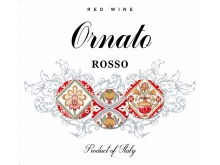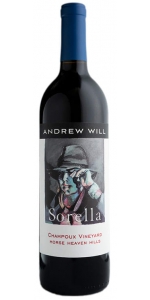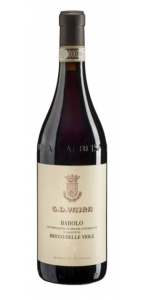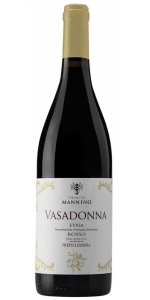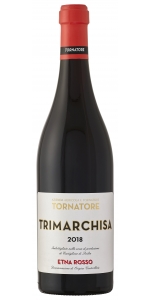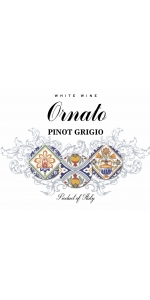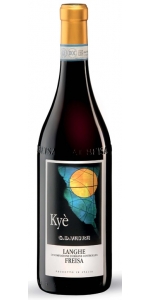Ornato Rosso 2019
| Country: | Italy |
| Region: | Veneto |
| Winery: | Ornato Vini |
| Grape Type: | Merlot |
| Organic: | Yes |
| Vintage: | 2019 |
| Bottle Size: | 750 ml |
Andrew Will Winery Sorella 2019 is made from 80% Cabernet Sauvignon, 8% Merlot, 8% Cabernet Franc, 4% Petite Verdot.
Sorella means sister in Italian and was named after Chris Camarda late sister Jane Camarda. This first vintage was from 1994. This wine is made from 100% Champoux Vineyard fruit and represents the nature of the vineyard by highlighting the Cabernet Sauvignon, which is considered some of the best in Washington State. The picture on the label is a portrait of Annie Camarda (Chris’s late wife).
Review:
Flirting with triple digits, and perhaps the best Sorella yet, the 2019 Sorella explodes from the glass with a fantastic mineral essence that sways between dark red fruit tones, oak essence and freshly opened flowers. Medium to full-bodied, the wine is impeccably balanced with a silky-smooth mid-palate that bestows a stunningly beautiful wine with gobs of complexity and a ripe frame of glossy black raspberry and blackberry fruit tones. Unwinding across the finish, the wine unpacks gorgeous layers that seduce me for a second, third and fourth sip and finally begs me to finish the glass. Buy this ASAP!
-Wine Advocate 99 Points
G.D. Vajra Bricco Delle Viole Barolo is made from 100 percent Nebbiolo.
The Barolo Bricco delle Viole shows the signature verticality of its vineyard. The wine is beautifully layered and - while restrained as it’s always the case in the youth of Bricco delle Viole - it also shows a complexity of layers with purple flowers, sweet spices and mineral tones. The palate is noble, with a refined acid spine and profound tannins that promise a long aging potential.
Among the historical vineyards of Barolo, Bricco delle Viole is the highest and the closest to the Alps. It rises from 400 to 480 meters above sea level, on the Western ridge of the village. Its name, “Hill of Violets”, originates from the flowers that blossom early here due to the perfect south exposure. Up above the fogs, Bricco delle Viole enjoys the earliest sunrise and the last sunset every day. Thanks to its vines dating back to 1949 and -now- 1931, a dramatic diuturnal temperature range and this pure light, Bricco delle Viole generates a sophisticated and profound Barolo DOCG of bright aromatics, chiseled tannins and subtle minerality. 2018 is a vintage that shows many nuances of Bricco delle Viole: beyond the signature verticality of this site, the wine offers high tones laced with mineral nuances and plenty of energy and youth.
Review:
A juicy Barolo, with vibrant acidity and a fluid profile that exudes cherry, raspberry, mown hay, mineral and eucalyptus aromas and flavors. Tight yet long, with excellent potential.
#26 Wine Spectator Top 100 of 2023
The last wine poured at my tasting at the winery is the G.D. Vajra 2019 Barolo Bricco delle Viole. With its high vantage point in the hills west of Barolo, Bricco delle Viole is a world apart in terms of soils (with Sant'Agata marl and fossils) and even harvest times. Slow and careful ripening like the kind that characterizes fruit in 2019 renders a very delicate and ethereal expression with floral tones, wild mint and licorice. This organic wine is solid in build and structure. Indeed, Isidoro Vaira remarks that Nebbiolo tannins have changed since the 1970s and 1980s.
-Wine Advocate 97+ Points
Jeweled in appearance, the 2019 Barolo Bricco Delle Viole may be the best wine I have tried yet from Vajra. Its gorgeous and alluring perfume of fresh roses is followed by a Burgundian, elegant red with incredible length and no harsh edges, fine and present tannins, and beautiful, graceful concentration. It is drinking well now, and I will be trying to get my hands on as much of this as possible. Drink 2025-2045.
-Jeb Dunnuck 97 Points
Tenute Mannino Etna Rosso Vasadonna Prefillossera is a red Etna obtained from old vineyards that give life to the typical grapes of the volcano, Nerello Mascalese and Nerello Cappuccio. The wine, with a beautiful light, presents a ruby red color, hints of good finesse with hints of spices and red fruits, aromatic herbs and mineral notes to the nose. The mouthfeel is full, warm and well balanced with tannins that express all the minerality of the volcano, and its freshness that lead to a long and persistent finish.
Then the wine is aged in French Oak barrels for 2 more years.Manual harvest in the second half of October. Spontaneous alcoholic and malolactic fermentation in stainless steel tanks for 6 months.
The vineyards are located in the districts Bragaseggi in the Municipality of Castiglione di Sicilia, on the North side of the volcano at 620 meters above sea level.
Ruby red with soft purplish reflections. Rich and complex on the nose, very reminiscent of small fruits of brambles, black cherry and a very delicate hint of softwood. On the palate it is decisive, complex and extraordinarily persistent.
Review:
Complex aromas of ripe fruit, toffee, cedar and smoke. Medium body, round and creamy tannins and a fresh, juicy finish.
-James Suckling 94 Points
This Pinot Grigio is grown at the foot of the remains of what was once the stunning villa of the della Scala family, one of the most influencial families in Verona from the early 1200's to the late 1300's. The much admired ruler of Verona, Cangrande I della Scala, summered at this villa. Cangrande I was a great warrior, diplomatic prince and an important patron of the arts. He championed the works of Dante, Patrarch and Giotto. He created beautiful architecture throughout the city in the ornate, gothic style of his time. This label is a reproduction of the design taken from a fragment of the ornate and intricate art that once covered the ceilings of the villa. In Italian, Ornato means ornate or adorned. This label celebrates the beautiful, complex taste of the Della Scala family and the Gothic art of that period.
Color: Brilliant straw colored wine with golden reflections.
Bouquet: Fresh and floral bouquet with a hint of pears, apricots and bananas blended with the intense aroma of acacia flowers.
Taste: Fresh and inviting with bright fruit and an easy drinking style with a pleasing hint of almonds in the aftertaste.
Vineyard: Rich in limestone the soil is of alluvial origin. The vineyards are located in the province of Verona. The agricultre is sustainable. No chemical fertilizers, herbicides or pesticides are used. The vineyards are South facing at 300 meters above sea level.
Harvest: September – by hand. The grapes are picked as they ripen to keep the acidity high. The grapes are brought to the cellar and refrigerated within a half hour of picking to keep oxidation to a minimum.
The grapes are soft pressed and the juice is placed in stainless steel along with the skins for a brief maceration of 12 hours at 8-10° C. The must is then racked and lightly filtered. Fermentation then takes place with selected indigenous yeast under controlled temperatures. Of 16-18°C. The fermentation is slow and cool to emhance the natural aromas of the grapes. The finished wine is placed in stainless steel holding tanks until bottled.
Aging: 3-4 months in stainless steel.
Alcohol: 12%
Acidity: 5.30
Seafood dishes, risottos with scampi, spaghetti with clams, sole in white wine.
G.D. Vajra Freisa 'Kye' Langhe Rosso is made from 100% Freisa.
DESCRIPTION: In 2004, Freisa was discovered to be the closest relative to Nebbiolo, thus explaining the deep bond this variety has with Piemonte and its people. With a noble profile and similar characteristics to the Nebbiolo, we have been bottling a dry Langhe DOC Freisa ever since 1989. Kyé means ‘who is?’ and represents the surprise for this indigenous and forgotten grape.
VINEYARD AND TERROIR: Estate vineyards, the oldest located in San Ponzio, on the lower west border of Bricco delle Viole. This is the closest vineyard to the winery, and a selezione massale planted by Aldo in 1980.
GROWING: In 1971, Aldo Vaira was one of the earliest adopters of organic farming in Piemonte. Vineyards have been nurtured and soil preserved by grassing and cover crop for almost 50 years now. With an incredible ratio of manual work per hectare, farming at Vajra is a labor of love and “recipe-free” attention. Intense research is also placed into monitoring and improving the biodiversity of both flora and fauna not just in the vineyards, but also in the winery fields and forests. The winery is sustainably certified (UNI EN 11233:2009) and will be again fully organic certified since 2019.
Langhe DOC Freisa Kyè displays a beautiful, translucent garnet color. The aromatics are a combination of redcurrant and wild mountain berries, layered with a touch of sweet spices, fresh leather, and candied japonica prune. The mouth is juicy, succulent, with lots -yet never hefty- tannins. There is a beautiful structure in this vintage and a lovely, lovely finish.
Review:
‘The 2018 Langhe Freisa Kyé is quite refined in this vintage and yet it also shows all of the aromatic nuance and complexity that are such signatures of this variety and wine. Dried herbs, rose petal, lavender, mint and spice lend exotic nuance to this deep, beautifully layered Freisa. The Kyé is one of the sleepers of Piedmont's 2018 vintage. It is, quite frankly, ‘as good or better than some Barolos in this tricky vintage. ~- Antonio Galloni
-Vinous 93 Points
Ornato Rosso is made from 60% Merlot, 35% Corvina, 5% Negroamaro.
Intense purple color, tending towards amber with ageing. The oak aging gives pleasant notes of spices and vanilla. This wine has a very solid structure due to the elevated alcohol and the balance between soft tannins and acidity.
Traditional red wine vinification at a controlled temperature. The harvest is carried out in two different times. After the hand-harvest, grapes are pressed, and fermentation starts. The skins are left in the must for a long period to extract flavors and the characteristic ruby red color. Aged in oak for 3 to 4 months
Great wine for roasted and grilled meats. Ideal with game dishes and excellent with mature hard cheeses
Ornato Vini is dedicated to producing wines that are easy to drink and provides pleasure without breaking the bank ...
Timeless Wines has always been known for its quality/price ratio philosophy and for selecting wines that over delivers. Ornato Vini share the same philosophy.
The wine is produced by a family owned winery founded in 1928 and run today by the third generation.
Operating from a modern facility, combined with an extensive work in the vineyards, Ornata has been dedicated to producing wines that are fresh, clean and that respect the typicity of the terroir.
- back
Perchaud Chablis Premier Cru Fourneaux is made from 100 percent Chardonnay.
This is the south facing portion of the slope and very hot, heavy "Fourneaux" or "oven" effect.
The wine is expressive and vivacious with beautiful aromas.
Well-balanced, round and fruity wine with a fine minerality on the finish.
1er Cru Fourneaux is located on the Fleys village and faces the field. the plots are very steep and exposed full south on soil type Kimmeridgian consists of marl clay-limestone with shallow ground and a very stony ground. After a slight settling, the juice starts its fermentation in tank, then ¼ of juice is racked in barrels. Both wines perform their alcoholic fermentation and malolactic and their aging on the lees, separately. The two cuvées are blended six months after harvesting. The wine is then filtered and is bottled 15 months after harvesting. 2013 Conditions and Harvest The relatively high temperatures at the end of winter allowed an early bud vines in early March. With a hot, dry spring flower took place in good conditions. In July, a hailstorm located did some damage to our Fourchaume plot. July and early August, rainy and stormy brought the water needed by the vineyards. The dry and sunny weather of the second half of August brought the grapes to maturity. The harvest began on September 2 under cloudy skies.
Coquille St. Jacques (scallops) with leeks and cream.
Torbreck Runrig Shiraz - Viognier is made from 98% Shiraz, 2% Viognier.
RunRig often draws comparison with the beautifully fragrant and tautly structured wines from the steep slopes of the Northern Rhône Valley’s Appellation of Côte Rôtie. Shiraz from old dry grown Barossa vineyards is blended with Viognier, complementing the strengths and complexities of these individual parcels of fruit, whilst giving the resulting wine a further dimension.
The Highland clans used a ‘RunRig’ system to distribute land amongst their clansmen in a series of widely dispersed holdings. The emphasis was not on any one farm but rather the communal element of the whole. Shiraz from old dry grown vineyards is blended with Viognier, complementing the strengths and complexities of these individual parcels of fruit, whilst giving the resulting wine a further dimension.
Review:
Tasting the RunRig beside the Descendant is always a wise move, in order to gain some contextual understanding of how they are similar and, perhaps more importantly, how they differ. This 2020 RunRig was sourced from six different vineyards across Barossa (in Lyndoch, Rowland Flat, Moppa, Ebenezer, Light Pass and Greenock) and includes a 2% “dosage” (as winemaker Ian Hongell described it) of Viognier. Matured for 30 months in a combination of new French oak (50%) and second and third fill barrels, the wine rests on its lees for that time. The lower percentage of Viognier here is a seductive and effective thing, adding just enough slick and polish to make this the sybaritic wine that it is, but little enough to allow the grunt, grit and muscle of the Shiraz from all those glorious locations to shine through. Despite the very long time in oak, the wine is balanced and excellent, big in almost every possible way but with an undeniable sense of class and length of flavor. Executed with detail and precision, this wine is clearly defined in its expression of house style
-Wine Advocate 97+ Points

